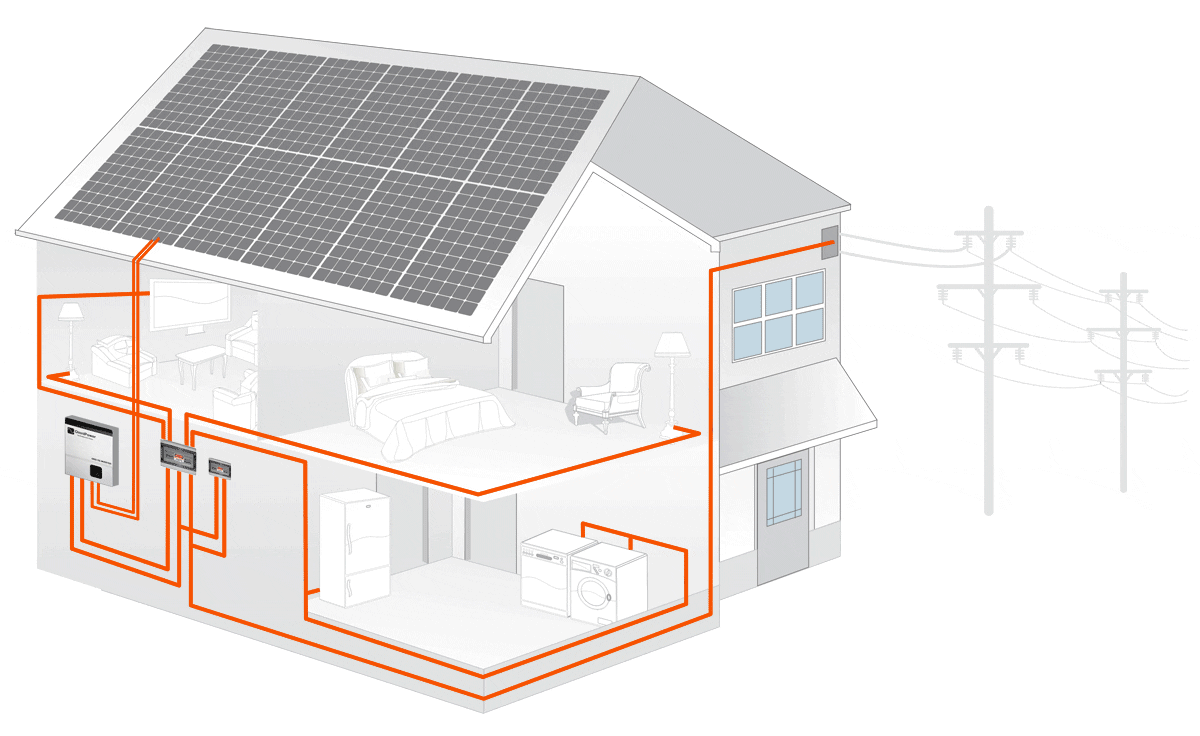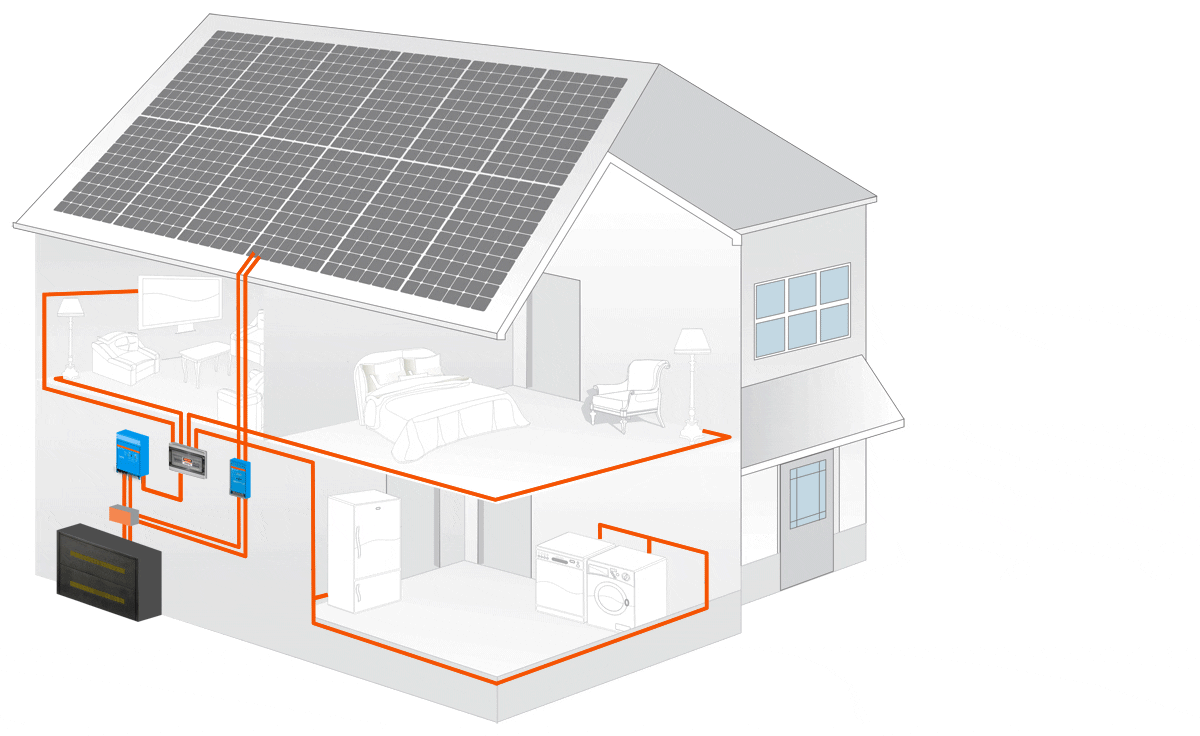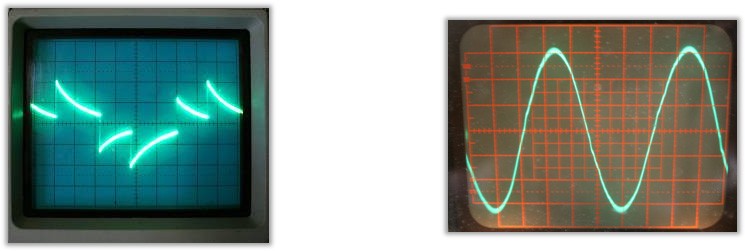
GRID TIED SOLAR INVERTER SYSTEM
Grid tied systems consist of solar panels and a dedicated grid tied inverter. All the electric power generated by the solar panels feeds through a mains synchronized inverter directly into your distribution board and offsets the power you would normally consume from Eskom. It will of course only do this when the sun shines! If the panels produce more power than what is being consumed at the time, the balance will flow back into the network and it will actually reverse the electricity meter (Only applicable in some municipal districts. A special meter is required should you be located in a municipal district that allows the meter to reverse when power is being fed back into the grid). Since no batteries are used, the additional power generated can not be stored for later use. This means that energy required at night or during cloudy / overcast days will still be obtained from Eskom / City Power etc. Simply stated, A grid tied system will reduce your dependency on municipal / Eskom power but not remove the need the need for municipal power entirely.

STAND-ALONE SOLAR INVERTER SYSTEM
During Load Reduction (Load Shedding) or Power interruptions when no power from Eskom / City Power / Municipal utilities is available then a stand-alone solar system is the answer. This type of system is COMPLETELY independent of the power grid and there is no interaction whatsoever with Eskom / Municipal power providers. Typical applications are on farms or remote locations, although it could be installed practically anywhere. These type of systems consists of Solar panels on the roof. A charge controller to regulate the flow of energy from the solar panels to the battery bank. A battery bank where the solar electric energy is stored and an inverter to convert DC power from the solar panels into AC power which is required for most domestic appliances and household requirements.

Inverters
The primary job of an inverter is to convert the DC (Direct Current) power from the battery bank or solar panels to AC (Alternating Current) power needed for most appliances. To do that, it must take the constant DC voltage and change it to a sine wave curve that goes above and below 0 volts. When inverters first came out, the most common way to do this was to make the voltage go straight up and down, creating a blocky signal. This is called modified sine wave, seen in orange in the image below. More advanced modified sine waves make multiple steps, trying to come close to a pure sine wave.
DC Voltage, Modified Sine Wave, and Pure Sine Wave.
In the following images, you can see an output of a modified sine wave on an oscilloscope at the left. A Pure Sine wave is shown on the right. Other than how the signal looks, what’s the difference between the two outputs?
Modified Sine Wave and Pure Sine Waves on Oscilloscope
A modified sine wave inverter can be used for simple systems that don’t have any delicate electronics or audio equipment that may pick up the choppy wave and produce a hum. Old tube TVs and motors with brushes are usually ok with modified sine wave. Your digital clock will likely act funky, and battery rechargers quite often just plain won’t work. Some equipment may seem to be working fine, but may run hotter than with a pure sine wave and reduce the life of it. Take heed if you’re considering buying a modified square wave inverter to shave a few bucks off your system costs. A whole raft of modern appliances won’t run as well and some not at all on this waveform: Laser printers, photocopiers, and anything with an electrical component called a thyristor Anything with a silicon-controlled rectifier (SCR), like those used in some washing machine controls A few laptop computers, some fluorescent lights with electronic ballasts, some battery chargers for cordless tools, some new furnaces and pellet heaters with microprocessor controls digital clocks with radios, appliances having speed/microprocessor controls (like some sewing machines), home automation systems, medical equipment such as oxygen concentrators.
In general, because the total harmonic distortion is higher in modified square wave inverters, motors will run hotter (less efficiently, consuming up to 30% more energy than with pure sine wave inverters), and are likely not to last as long. Additionally, a modified square wave inverter will often cause a “buzz” to be heard from audio devices and sometimes other appliances like ceiling fans and microwave ovens. We liken using a modified sine wave inverter to running a car with square wheels versus a pure sine wave inverter like running a car with round wheels. In the first case the ride is going to be awful rough and depending on the sensitivity of the car’s occupants they may not survive the ride.
Pure Sine Wave Inverters are Preferred for Many Electronics
Pure sine wave is always needed for a grid tie system. It is generally needed for newer LED TVs, CFL light bulbs, and inductive loads like brushless motors. Clocks and audio equipment will behave much better on a pure sine wave inverter.
Differences in Cost Between Modified and Pure Sine Wave Inverters
Generally, modified sine wave inverters are less expensive than a pure sine wave inverter, so they are still used in simple systems. But as technology advances, the cost of pure sine wave inverters is coming down, making them much more affordable and the favourite option.
Off-Grid Inverters Working with 12, 24, or 48V Battery Banks
Once the charge controller has charged up the battery bank, the off-grid inverter converts the 12, 24, or 48VDC battery bank to AC voltage. The AC output depends on your requirements. Homes will often use 240V single phase for larger loads such as a clothes dryer, well pump, and electric stove. Commercial buildings that use a lot of power will generally have 380v 3-phase delivered to the building, and it is then broken out to 220V when sent to the outlets. You need to determine what your loads require, and select and configure the inverter accordingly. When selecting an inverter, you must determine what your maximum wattage draw will be if all of your appliances that may be on at the same time, are on. If you have an 800W well pump, a 100W fridge, five 10W lights, and a 50W laptop, you need to add the wattages together to get at least a 1,500W inverter. You also have to make sure the inverter is able to handle the surge as motors turn on. For example, if your fridge and well pump both turn on at once, the surge could be three or four times the rated wattage. You must be sure the inverter can handle that. Inverters are rated in both continuous wattage and surge. Additionally, you need to select the battery bank size and select the inverter to match. Inverter voltage is not field selectable, they are either 12V, 24V, or 48V, they cannot do all of them, just one. Battery based inverters have a lot of options to choose from. Not all of the inverters have all of the features, so you need to decide which features are required or desired, and select the inverter based on which has them. Some of the features include the ability to charge the battery bank from an AC source like the grid or a generator; even automatically starting the generator to power the built-in AC charger in the inverter to charge up the deep cycle batteries when they are low, and turning it off when they are charged. Some can automatically use the generator to assist with high loads, reducing the need to oversize the inverter for occasional heavy use.
Smart Inverters are also available that will use solar power as a priority directly from the solar panels , then from the batteries if there is no sunshine and finally from the electrical source should the batteries run low.
Many inverters can be stacked to increase either the voltage or the current, or both. This allows you to use multiple inverters in a master/slave configuration, automatically turning on only the inverters as needed, conserving battery power, as you are not providing power to the second inverter when it is not needed.


